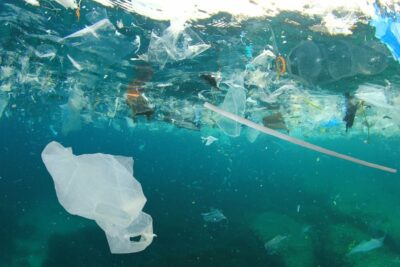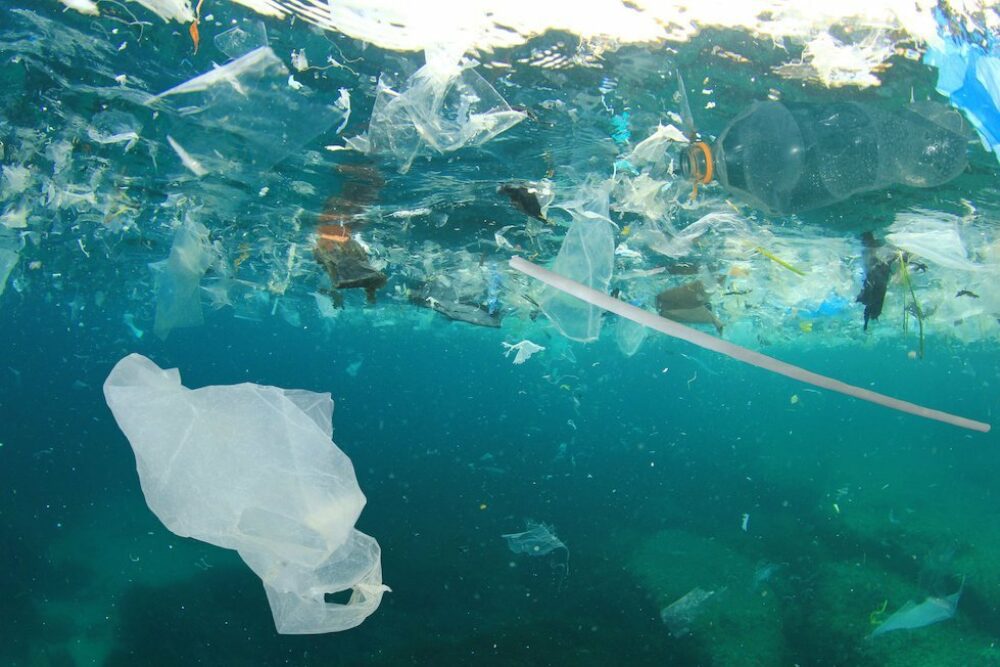When wind and waves help to facilitate the collection of plastic debris.


Date of publication 22 June 2020
Authors Ruiz, Irene; Basurko, Oihane C.; Rubio, Anna; Delpey, Matthias; Granado, Igor; Declerck, Amandine; Mader, Julien; Cózar, Andrés.
Sources Litter Windrows in the South-East Coast of the Bay of Biscay: An Ocean Process Enabling Effective Active Fishing for Litter (2020) Frontiers in Marine Science : 7,
Abstract
Abstract: Large scale convergence regions of floating marine litter are commonly observed in semi-enclosed seas as the Bay of Biscay. However, clean-up activities on such accumulation regions are limited by the spread of the large-size floating litter on the sea surface. Data gathered by a small-scale fishing vessel devoted to active fishing for floating litter activities during the spring and summer of 2018 reveals that the linear streaks of high concentration of floating litter (so-called litter “windrows”) are common accumulation structures in the south-east coast of the Bay of Biscay. The random search of litter windrows for their collection through surface tows of macro-nets was proved to be an effective action for floating litter mitigation. A total of 196 tows collected 16.2 tons of floating marine litter in 68 working days. Most of the litter windrows were around 1 km length and, on average, accumulated 77.75 kg of floating marine litter. Fishing, shipping and aquaculture sectors were the source of 35% of the 4,130 litter items analyzed (55% in weight of the sourced items), and plastic was the most common type of material (96% in terms of items). A better understanding of the phenomenon of the litter windrows, capable to guide clean-up efforts in space and time, would provide a considerable improvement in the efficiency of mitigation actions to reduce the marine litter pollution. The observations of litter windrows in the coastal area of the south-east of the Bay of Biscay demonstrate the key role of submesoscale processes in the distribution of FML. The present work provides a thorough description of floating litter windrows in nature, which it was non-existent to date. The results are the kind of proof necessary to boost the research addressed on the submesoscale aggregations of FML. Coupling litter windrows observations with remote-sensing technology and high-resolution modeling techniques offer great opportunities for the mitigation actions against marine litter. The SeaCleaners’ View : The majority of plastic debris found at sea comes from land. The fate of plastic waste at sea is still the subject of much debate. The drift of plastic waste on the high seas concerns a small fraction of the waste. Current studies showed that instead of dispersing, pollutants could also concentrate. Temporary and small-scale areas of convergence are also appearing in all seas. The problem becomes an asset for the collection of plastic waste.
Maritime activity also generates plastic waste, in particular the famous ghost nets that are thrown or lost and continue to drift at sea for years. However, this contribution remains in the minority compared to all the waste resulting from coastal activities and those located in river catchment areas. Indeed, the historical development of urban centres took place around water points, an essential resource for life and agriculture. It is therefore quite logical to find highly urbanised areas along rivers. With the development of mass tourism and the attractiveness of coastal areas, the latter are also increasingly urbanised. This phenomenon is accompanied by a significant increase in pollution, even in developed countries.
When river and coastal river flows are high, during flood periods, the quantities of plastic debris transported increase sharply. On arrival in the estuary, the hydrodynamics decrease, the waste with positive buoyancy rises to the surface and the rest settles on the bottom along the coasts. In the most recent models, the floating waste seems to be pushed rapidly towards the coast to be washed up on the beaches. It undergoes several cycles of re-flooding/grounding through the tides and wind. Similarly, storms favour the re-suspension of sedimented waste on the bottom, which may again have the opportunity to ground. During these processes, the fragmentation of plastics begins under the action of their physicochemical degradation and the mechanical effect of the waves.
However, it is an extremely variable phenomenon. In calm weather, with winds blowing towards the coast, the waste carried by rivers will quickly run aground and almost none of them will reach the open sea. In reverse with winds and/or stormy weather, much of the waste is re-suspended and may be carried offshore by coastal marine currents, such as tides. One could then think that dispersion will be significant due to the simple principle of entropy and thus generate very low densities per km2. This was the idea of the marine environment until the 1960s, hence the sewage discharges into the sea and the landfills along the coasts that the sea regularly “cleaned”. Even new nuclear power plant installations by the sea met the dual need for large amounts of water and dispersion of residual radioactivity from discharges.
This is one of the surprises nature holds for us when we think we understand it without observing it closely. Yet these areas of waste concentration were known in estuaries. They are called confluence zones. Simply put, two masses of water face each other, fresh and salt water, with vertical turbulent movements that cause floating objects to be pushed towards this zone on either side and therefore can no longer leave it. This is where the plankton concentrates and therefore the fish. These areas are well known to fishermen. They are mainly observed in parts of the world that have fairly high tides, for example in the English Channel. They also exist offshore because of the great surface sea currents. The best known is the Antarctic Convergence, also known as the polar front, where krill is very abundant. It is created by the meeting of temperate waters coming from the north and cold waters coming from the south.
They are generated by the action of wind and waves which creates vertical turbulence whose rotation in opposite directions, like gears, induces surface currents in opposite directions very locally. The result is the formation of convergence zones that can be a few metres to 100 metres wide and sometimes several kilometres long. Floating debris and pollution then accumulate in the centre of these structures, causing very significant local over-concentrations, which are particularly problematic in the case of chemical or radioactive pollution. These areas have a very variable life expectancy but can transport waste over long distances or in contradiction with the local average current.
The authors of the article, cited in reference, have shown that such accumulation zones exist in the Bay of Biscay. Coastal plastic waste pollution is very significant in some parts of its coasts due to urbanisation and/or the strong seaside tourist activity. The energy of the Atlantic waves entering the Bay is very important, hence the numerous surfing spots that can be found there. They have a very high capacity for dispersing waste to the coast. However, under certain weather conditions, Langmuir accumulations form further offshore. Diffuse plastic pollution of a few kg/km2 collects and generates narrow areas where densities of up to 1,200 kg/km2 are observed. They are in the form of streaks a few metres wide and several hundred metres to a few kilometres long. The collection of floating waste then becomes much more efficient. In this collection campaign 16 T of waste were collected.
This natural phenomenon is therefore a gift from nature that deserves to be appreciated and used.
Comments area